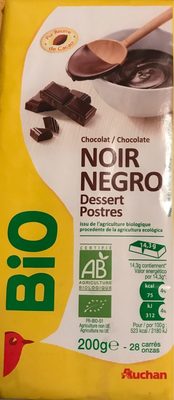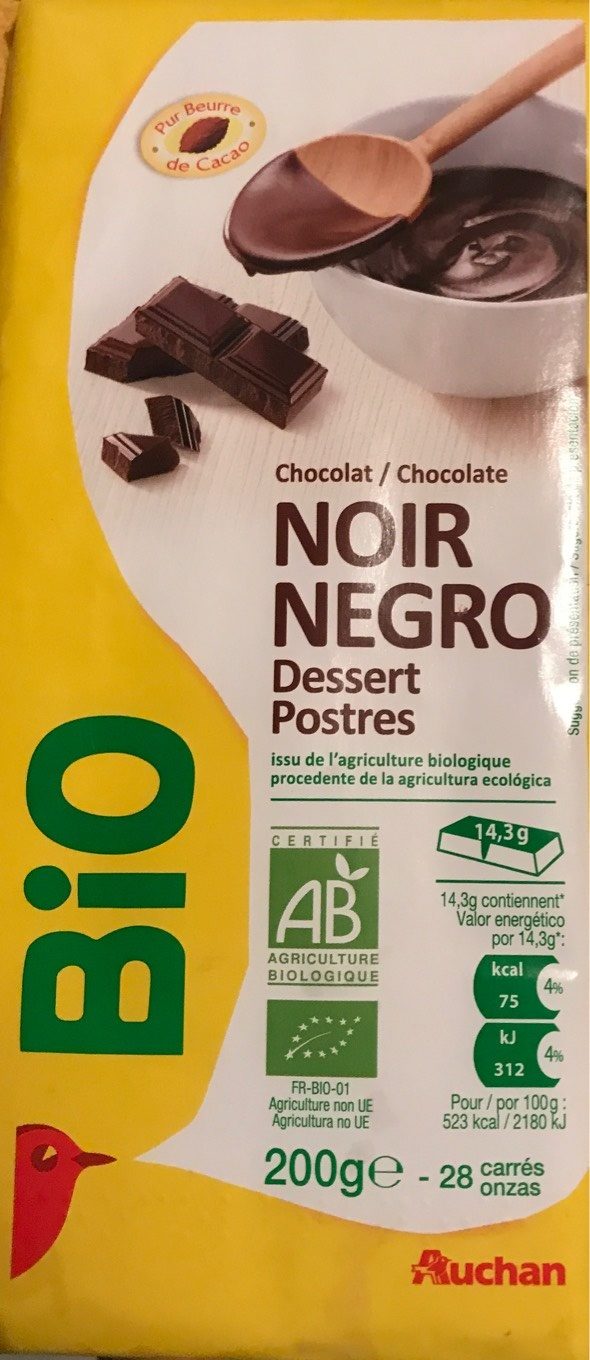Chocolat noir dessert - Auchan - 200 g e
Important note: this product is no longer sold. The data is kept for reference only. This product does not appear in regular searches and is not taken into account for statistics. (Withdrawal date: 2023/07/01)
This product page is not complete. You can help to complete it by editing it and adding more data from the photos we have, or by taking more photos using the app for Android or iPhone/iPad. Thank you!
×
Some of the data for this product has been provided directly by the manufacturer AUCHAN APAW.
Barra-kodea: 3596710309122 (EAN / EAN-13)
Izen arrunta: Chocolat noir dessert 52% cacao
Kopurua: 200 g e
Ontziratzea: pt:Envase de papel, pt:Papel de aluminio
Markak: Auchan
Kategoriak: en:Snacks, en:Sweet snacks, en:Cocoa and its products, en:Chocolates, en:Dark chocolates
Etiketak, ziurtagiriak, sariak:
en:Organic, en:EU Organic, en:Non-EU Agriculture, en:EU Agriculture, en:EU/non-EU Agriculture, FR-BIO-01, en:In braille, AB Agriculture Biologique

Manufacturing or processing places: Natra Saint-Étienne S.A.S., Natra S.A., Saint-Étienne, Arrondissement de Saint-Étienne, Loire, Auvergne-Rhône-Alpes, France
Traceability code: EMB 42218A - Saint-Étienne (Loire, France)
Matching with your preferences
Ingurumena
Carbon footprint
Ontziratzea
Transportation
Etiketak
Report a problem
Datuen iturria
Product added on by javichu
Last edit of product page on by org-auchan-apaw.
Produktuaren orria -gatik editatua beniben, date-limite-app, drunkenbison, fix-ingredientes-bot, kiliweb, manu1400, musarana, neptuno, openfoodfacts-contributors, packbot, quechoisir, roboto-app, tacite, yuka.UmJJaUV2MEluc0ltbzlvWG9rck42Lzl2dzZhdkFtZXFjTEZLSUE9PQ, yuka.WjROZkRLVmRxOUpUd3N3VjBqR0kxZlZZem82QVlsK1VOT3dPSVE9PQ.












